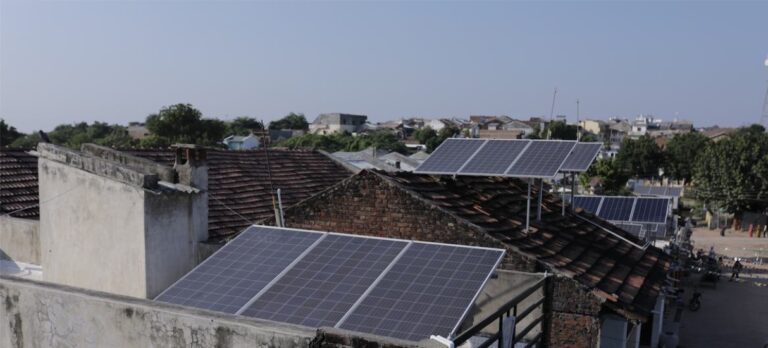![]()
Modhera, a village in India, has become the country’s first solar-powered village, thanks to a government initiative. Gadvi Kailashben, a 42-year-old widow, shared how the installation of solar panels on her house has eliminated her electricity bill, saving her money that she can now use for daily expenses and her children’s education. This transformation isn’t just limited to Kailashben; other villagers are also benefiting.
Ashaben Mahendrabhai and her family, who work in agriculture, used to have a substantial electricity bill. However, with solar installation, not only have their bills disappeared, but they also generate excess electricity that they can sell back to the grid.
Initially, the villagers were skeptical about solar energy due to a lack of understanding. However, with the project team’s efforts, they came to realize the advantages and are now enthusiastic supporters of the technology.
Local farmers Pingalsinh Karsanbhai Gadhvi and Surajben Gadhvi are also reaping the benefits of solar panels, saving thousands of rupees every month, which they consider a form of pension for their old age.
UN Secretary-General António Guterres praised the government and residents of Modhera for their efforts in embracing solar energy and highlighted the positive impact it has on both the community’s well-being and the environment.
The Sun Temple in Modhera, which is powered entirely by solar energy, offers a 3D light show and even has electric vehicle charging stations in its parking area. This initiative is part of a larger project that includes solar panels on rooftops, schools, bus stops, and more, with excess energy being added to the grid.
The project, funded by the Government of India and the Government of Gujarat, has a total cost of $9.7 million and aims to provide a model for other rural areas to adopt renewable energy solutions.
Modhera’s success in becoming a net renewable energy generator makes it a pioneering example for other villages and towns in India to follow. Ashaben Mahendrabhai encourages other villages to consider solar power, highlighting the financial and environmental benefits it brings.
Reference:







